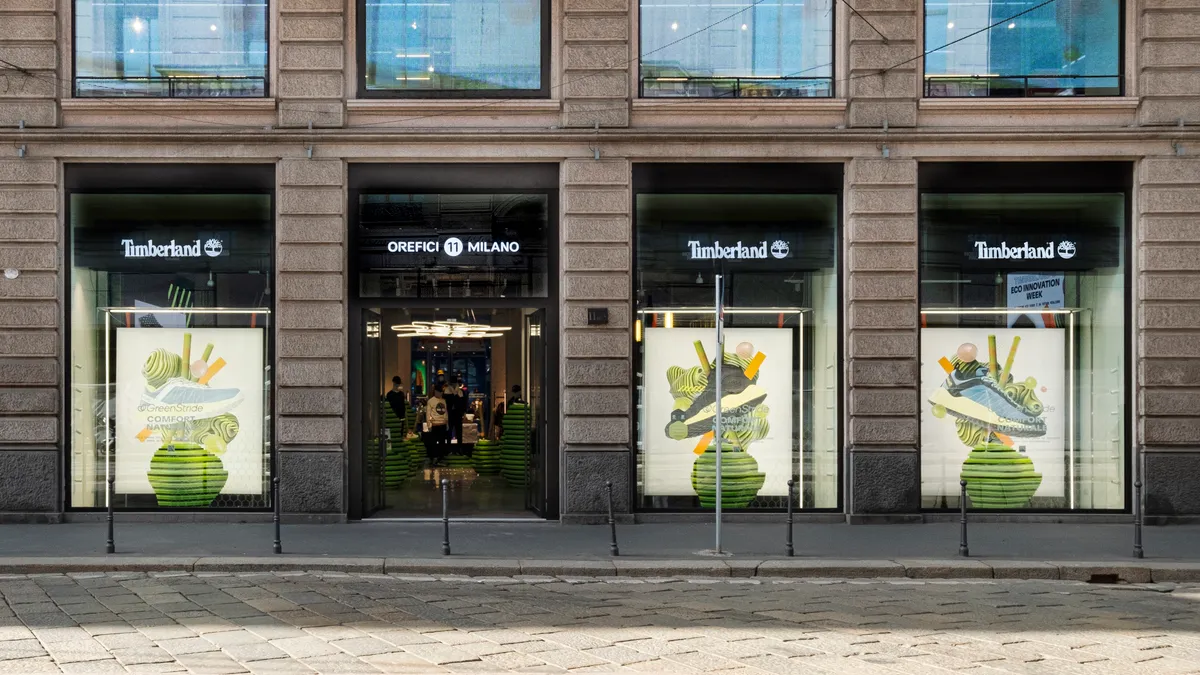Dive Brief:
-
V.F. Corp’s Q3 declines led S&P Global Ratings analysts to downgrade their issuer credit rating to “BBB-” from “BBB,” and their outlook to negative. But S&P’s Amanda O’Neill and Sarah Wyeth also said that “VF's financial policies and actions show commitment to investment-grade ratings.”
-
They expect declines at VF's four major brands — The North Face, Vans, Timberland and Dickies — to persist and “believe VF will have to sell sizeable brands to meaningfully reduce leverage in the near term.” They noted the company’s $6 billion debt burden and said that must be cut by almost $4 billion to hit its targets.
-
VF’s wholesale issues stand out even amid wider weakness in that channel. And the 8% decline in its direct-to-consumer business “further highlights brand issues beyond Vans,” they also said.
Dive Insight:
A year ago, VF Corp. was looking to The North Face for guidance in turning around its other labels, particularly Vans.
“The North Face is a solid and transferable execution blueprint for Vans, and frankly, the entire VF portfolio in the Americas, where we must grow with consumers more consistently,” then-interim CEO Benno Dorer told analysts.
Now even its top performer shows signs of struggle, joining its other three major brands in posting double-digit declines in Q3: Vans fell 28%, Timberland 21%, Dickies 16% and The North Face 10%.
“The North Face has been a bright spot in the VF portfolio but declined 10% for the quarter due to timing shifts, warmer weather, and a decline in demand for outdoor products,” the S&P analysts noted.
They see slow progress at Vans in the near term amid ongoing wholesale weakness in North America and intensifying competition, and “believe the brand's waning resonance with consumers will continue to hamper turnaround efforts in fiscal 2025,” they wrote.
That will likely add to its debt woes. S&P forecasts the company’s leverage will peak this fiscal year, which ends in March, as it incurs expenses as part of its cost-cutting strategy amid falling sales. Late last year, VF Corp. eliminated about 500 salaried positions across the company globally, part of an effort to slash $300 million in expenses.
S&P now forecasts VF revenues to decline 10%, worse than its previous expectation for 6%, and for EBITDA margin to decline 200 basis points year over year. Their rating could decline further if “VF does not restore its core brands to growth or is not successful in divesting certain assets and using proceeds to reduce debt,” the analysts said. Several risks remain, including the macroeconomic environment and, particularly at Vans, any “fashion missteps or changing consumer tastes.”
The company could also run into trouble if it pursues a major acquisition, per S&P, though that seems unlikely given its circumstances. VF Corp. for years has revamped its portfolio time and again, with its biggest purchase its $2.1 billion acquisition of cult brand Supreme about three years ago.
“At this time, we believe VF remains committed to a conservative financial policy and will abstain from mergers and acquisitions,” the S&P analysts said.
Selling off brands is another story. The company’s debt-reduction needs suggest that one or two of its major brands must be sold, according to the S&P analysts. Indeed, CEO Bracken Darrell earlier this month announced a strategic review of the company’s assets, and some analysts speculated then that Dickies or Timberland would be most likely to go.
But that isn’t risk-free, either, S&P analysts warned.
“While this will allow the company to reduce its high debt burden faster, it also reduces its brand diversity and puts more pressure on the remaining underperforming brands to turn around,” they said.












